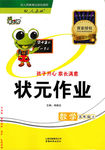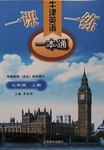题目内容
There are many different ways of seeing a town for the first time. One of them is to walk around it, guide-book __1__ hand. Of course, we may __2__ with our guide-books the history and__3__developments of a town and get to know them. __4__ then, if we take out time and__5__in a town for a while, we may get to know it better. When we __6__ it as a whole, we begin to have some__7__, which even the best guide-books do not answer. Why is the town just__8__this, this shape, this plan, this size? Why do its streets__9__ in this particular way, and not in any __10__ way?
Here even the best guide-book__11__us. One can’t find in it the information about how a town has developed to the__12__appearance. It may not describe the original __13__ of a town. However, one may get some idea of what it__14__look like by walking around the town. One can also imagine_15__the town was first planned and built. Then one can learn more about in what direction the town__16__to develop.
What is the__17__of studying towns in the way? For me, it is__18__that one gets a greater depth of pleasure by visiting and seeing a town with one’s own eyes. A__19__visit to a town may help one better understand why it is attractive__20__ just reading about it in a guide-book.
1. A. to B. in C. by D. on
2. A. write B. tell C. study D. remember
3. A. separate B. strange C. similar D. special
4. A. Since B. Before C. Until D. But
5. A. stay B. march C. work D. sail
6. A. look after B. look at C. look for D. look up
7. A. feelings B. questions C. ideas D. opinions
8. A. of B. like C. as D. for
9. A. run B. open C. begin D. move
10. A. one B. such C. more D. other
11. A. fails B. tricks C. helps D. satisfies
12. A. old B. present C. first D. normal
13. A. design B. meaning C. capital D. change
14. A. had to B. seemed to C. used to D. happened to
15. A. what B. where C. when D. how
16. A. continues B. appears C. starts D. stops
17. A. problem B. view C. point D. difficulty
18. A. simply B. nearly C. generally D. badly
19. A. costly B. personal C. group D. formal
20. A. from B. with C. through D. than
BCDDA BBBAD ABACD ACABD

 开心蛙状元作业系列答案
开心蛙状元作业系列答案 课时掌控随堂练习系列答案
课时掌控随堂练习系列答案 一课一练一本通系列答案
一课一练一本通系列答案